Microwave food thermometer is essential kitchen tools for ensuring food safety. These thermometers quickly and accurately measure the internal temperature of food cooked in a microwave. This helps avoid undercooking, which can result in harmful bacteria remaining in your meals.
They are easy to use and provide instant readings, making them convenient for busy households. Using a microwave food thermometer helps ensure your meals are not only tasty but also safe to eat. With many models to choose from, you’re sure to find one that fits your needs and preferences. Investing in a reliable microwave food thermometer can significantly enhance your cooking experience and peace of mind.

Credit: www.ebay.com
What Is A Microwave Food Thermometer
A microwave food thermometer helps ensure your food is cooked safely. It measures the internal temperature of food. This tool is essential for preventing undercooked meals. Using it helps make sure any harmful bacteria are destroyed. Now, let’s take a closer look at what a microwave food thermometer is and how it functions.
Functionality
A microwave food thermometer is a specialized device designed for use in microwaves. It helps check if food reaches the right temperature. This thermometer can be used during and after cooking. Its primary purpose is to avoid foodborne illnesses. Here are some key functions:
- Real-time temperature readings: Some models provide instant readings.
- Safe cooking: Ensures food is cooked at safe temperatures.
- Accuracy: Provides precise temperature measurements.
Many thermometers feature a digital display, making it simple to read the temperature. Some models also include preset temperature settings for various foods. These options add convenience and enhance cooking safety.
Types Available
Microwave food thermometers come in various types. Each type has its unique features. Here are the most common types:
- Digital Thermometers: Provide quick and accurate readings. Often feature a digital display.
- Dial Thermometers: Have a simple dial display. They are easy to use and read.
- Probe Thermometers: Feature a probe that you insert into the food. They are ideal for checking internal temperatures.
Each type serves a different purpose. Digital thermometers are great for quick checks. Dial thermometers are simple and reliable. Probe thermometers work especially well for checking the temperature of larger cuts of meat. By choosing the right type, you ensure your food is cooked safely every time.
Benefits Of Using A Thermometer
Cooking food in a microwave can be tricky. A microwave food thermometer ensures your food is safe to eat. It helps you cook meals to the perfect temperature. This tool is very handy in every kitchen.
Food Safety
Using a thermometer ensures food safety. Undercooked food can make you sick. Bacteria like Salmonella can be in undercooked chicken. A thermometer helps you avoid this. You can check whether the food is hot enough to destroy harmful germs.
Here are some key points:
- Kills harmful bacteria: Proper cooking temperatures kill germs.
- Prevents food poisoning: Knowing the right temperature helps keep you safe.
- Peace of mind: You know your food is safe to eat.
Different foods need different temperatures.
Here is a handy table:
| Food | Safe Temperature (°F) |
| Chicken | 165 |
| Beef | 145 |
| Pork | 145 |
Cooking Accuracy
Accurate cooking is very important. A thermometer helps you cook food just right. No more guessing if your steak is medium-rare. You can know for sure. This tool helps you cook like a pro.
Benefits of cooking accuracy:
- Better taste: Food cooked to the right temperature tastes better.
- Even cooking: Ensures all parts of the food are cooked evenly.
- Saves time: No need to keep checking if the food is done.
Different dishes need different levels of doneness. A microwave food thermometer helps you achieve this. It helps you achieve perfect results every time you cook.
How To Use A Microwave Thermometer
Microwave food thermometers are essential tools for ensuring food safety. They allow you to quickly measure the internal temperature of your food. Using them properly ensures that your meals are safe to eat. This guide will show you how to use a microwave thermometer effectively.
Step-by-step Guide
Using a microwave thermometer is simple. Follow these steps to get accurate readings.
- Prepare the thermometer: Ensure it is clean and ready for use.
- Insert the probe: Place it in the thickest part of the food.
- Avoid bones and fat: They can give false readings.
- Read the temperature: Look at the display to see the accurate reading.
Always follow the manufacturer’s instructions. Each thermometer might have different features. Make sure the food reaches the safe temperature for its type.
Here are some common safe temperatures:
| Food Type | Safe Temperature (°F) |
| Poultry | 165°F |
| Beef | 145°F |
| Fish | 145°F |
| Leftovers | 165°F |
Remove the thermometer after reading. Clean it thoroughly after each use. Proper care ensures it lasts longer and remains accurate.
Common Mistakes
Many people make mistakes while using microwave thermometers. Avoid these common errors for best results.
Not calibrating the thermometer: An uncalibrated thermometer can give inaccurate readings. Always check if your thermometer needs calibration. Follow the instructions in the manual.
Incorrect probe placement: Positioning the probe improperly can result in inaccurate readings. Avoid areas with bones and fat.
Not waiting for the thermometer to stabilize: It needs a few seconds to display an accurate temperature reading. Be patient and wait for the temperature to stabilize.
Ignoring manufacturer instructions: Each thermometer may have specific guidelines. Always read and follow the manual for best results.
Using a damaged thermometer: A damaged thermometer can be unreliable. Make it a habit to inspect for any signs of damage or wear.
By avoiding these mistakes, you ensure your food is cooked safely. This leads to better meals and a safer kitchen environment.
Choosing The Right Thermometer
Microwave food thermometers are essential kitchen tools. They ensure food is cooked safely. Choosing the right thermometer can be tricky. It’s essential to understand which features to consider.. This guide will help you select the best thermometer for your needs.
Features To Look For
Choosing the right thermometer requires knowledge. Accuracy is the most important feature. A good thermometer gives precise readings. This helps make sure your food reaches the proper cooking temperature.
Speed is another key feature. A fast thermometer saves time. It also reduces the risk of overcooking. Choose a thermometer that provides quick readings within seconds.
Ease of use should not be overlooked. A simple, user-friendly design makes cooking stress-free. Large, clear displays are a bonus. Some thermometers even have backlit screens.
Durability is important too. A sturdy thermometer lasts longer. Waterproof models are a good choice. They can withstand spills and splashes.
Consider range when choosing a thermometer. Some thermometers have limited ranges. Ensure the thermometer covers the temperatures you need.
Battery life is another factor. Long-lasting batteries mean fewer replacements. Some thermometers even have auto-shutoff features to save power.
Here is a table summarizing these features:
| Feature | Importance |
| Accuracy | High |
| Speed | High |
| Ease of Use | Medium |
| Durability | Medium |
| Range | Medium |
| Battery Life | Low |
Top Brands
Several brands stand out in the market. ThermoPro is a popular choice. Their thermometers are accurate and fast. They also have user-friendly designs.
Lava tools is another trusted brand. They offer durable and waterproof models. Lava tools thermometers are known for their speed and accuracy.
OXO provides reliable kitchen gadgets. Their thermometers have clear displays and are easy to use. OXO thermometers are also durable and long-lasting.
Maverick is famous for their wireless thermometers. They offer innovative features. Maverick thermometers have a good range and battery life.
Here are some top brands and their features:
| Brand | Key Features |
| ThermoPro | Accuracy, Speed, User-friendly |
| Lavatools | Durability, Waterproof, Speed |
| OXO | Clear Display, Ease of Use, Durability |
| Maverick | Wireless, Range, Battery Life |
Maintaining Your Thermometer
Microwave food thermometers are essential tools for ensuring food safety. They help you measure the internal temperature of your food quickly and accurately. Taking good care of your thermometer is essential to keep it accurate and extend its lifespan. Below, we will discuss some essential cleaning tips and calibration methods to keep your microwave food thermometer in top shape.
Cleaning Tips
Keeping your microwave food thermometer clean is vital. Cleaning your thermometer properly keeps readings accurate and helps prevent cross-contamination. Here are some tips to clean your thermometer effectively:
- After each use, clean the probe thoroughly with warm, soapy water.
- Avoid immersing the entire thermometer in water.
- Gently wipe the thermometer’s body with a soft cloth.
- Dry the probe thoroughly before storing it.
- If needed, sanitize the probe using an alcohol wipe.
Make sure to follow these steps regularly. Keeping your thermometer clean guarantees safe and tasty meals every time.
Calibration Methods
Calibration is crucial for maintaining accuracy. Here are some methods to calibrate your Microwave food thermometer:
| Method | Steps |
| Ice Water Method | Fill a glass with ice and water. Insert the thermometer probe into the water. Make sure the probe doesn’t come into contact with the glass. The thermometer should read 32°F (0°C). |
| Boiling Water Method | Boil a pot of water. Place the thermometer probe into the boiling water, ensuring it doesn’t touch the sides of the pot. Make sure the probe does not touch the pot. The thermometer should read 212°F (100°C). |
Regular calibration ensures your thermometer provides accurate readings. This step is crucial to ensure food safety and maintain quality.
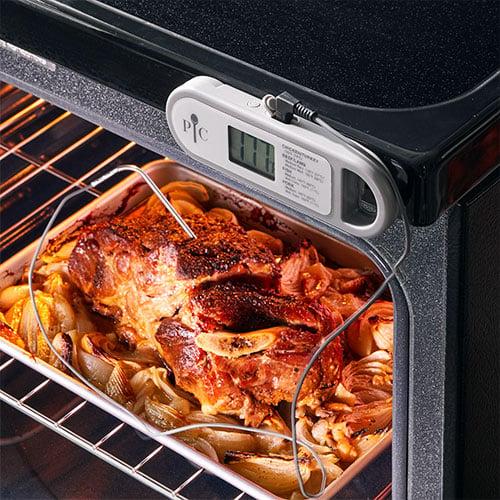
Credit: www.pamperedchef.com
Thermometer Vs. Traditional Methods
The use of a microwave food thermometer has revolutionized the way we cook and ensure food safety. This tool provides a quick and accurate reading of the internal temperature of food, which is crucial for preventing foodborne illnesses. Comparing a microwave food thermometer to traditional methods can help us understand the advantages and limitations of each approach.
Pros And Cons
Microwave food thermometers offer several benefits. They provide a quick and accurate temperature reading, which is essential for ensuring that food is cooked properly. This helps prevent foodborne illnesses and ensures that meals are safe to eat. The convenience of these thermometers cannot be overstated; they are easy to use and read.
One downside is that microwave food thermometers can cost more than traditional methods. They also require batteries, which means they need regular maintenance. Additionally, some models may not be waterproof, making them less durable in the kitchen.
- Pros:
- Quick and accurate readings
- Prevents foodborne illnesses
- Easy to use and read
- Cons:
- More expensive
- Requires batteries
- Some models are not waterproof
When To Use Each
Traditional methods such as visual cues and touch can be useful for experienced cooks. These methods rely on the cook’s intuition and experience, which can be reliable but are not foolproof. They are also cost-effective as they require no additional tools.
Microwave food thermometers are ideal for ensuring food safety, especially for dishes that require precise temperatures. They are particularly useful for cooking meats, poultry, and seafood, where the risk of undercooking is high. These thermometers are also great for cooks who are less experienced or those who want to ensure accuracy in their cooking.
| Method | Best For |
| Traditional Methods | Experienced cooks, cost-effective |
| Microwave Food Thermometers | Ensuring food safety, precise cooking |
Using a combination of both methods can provide the best results. Although traditional methods provide a quick check, a microwave food thermometer guarantees your food is cooked to the proper temperature.
Troubleshooting Common Issues
Microwave food thermometers are handy tools. They make sure your food reaches the proper cooking temperature. Knowing these issues can help you address them effectively. This guide covers common problems like inaccurate readings and battery issues.
Inaccurate Readings
Inaccurate readings can be frustrating. Your food might not cook properly.
Here are some common causes:
- Improper Placement: The thermometer might not be in the right spot. Insert it into the thickest section of the food.
- Dirty Probe: A dirty probe can affect readings. Clean it before use.
- Calibration Issues: The thermometer might need calibration. Check the manual for steps to calibrate.
Check your thermometer regularly. Make sure it is working well.
Here is a simple table to help troubleshoot:
| Problem | Possible Cause | Solution |
| Low Temperature Reading | Improper Placement | Reposition the thermometer |
| Fluctuating Readings | Dirty Probe | Clean the probe |
| Consistently Off Readings | Calibration Issues | Calibrate the thermometer |
Battery Problems
Battery problems can cause your thermometer to stop working. Here are some common battery-related issues:
- Dead Battery: The battery might be dead. Replace it with a new one.
- Loose Battery Connection: The battery might not be secure. Make sure it is properly connected.
- Corroded Battery Contacts: Battery contacts can corrode. Clean them with a cotton swab and vinegar.
Regular checks can help you avoid battery problems.
Here are some tips:
| Issue | Cause | Solution |
| Thermometer Not Turning On | Dead Battery | Replace the battery |
| Intermittent Power | Loose Connection | Secure the battery |
| Corrosion | Dirty Contacts | Clean the contacts |
Future Of Food Thermometers
Microwave food thermometers are revolutionizing how we cook. These devices make sure food is safe to eat. They help us avoid undercooked or overcooked meals. The future of food thermometers is bright. With new technology, they are becoming more accurate and user-friendly. This blog explores the future of food thermometers, focusing on technological advances and market trends.
Technological Advances
New technology is making microwave food thermometers better. Smart thermometers can connect to your phone. They send alerts when your food reaches the right temperature. This helps you cook with precision and ease.
Infrared sensors are another advancement. They can measure temperatures without making contact with the food. This ensures hygiene and prevents contamination.
Here are some key features of new microwave food thermometers:
- Wireless connectivity
- Infrared sensors
- Real-time alerts
- User-friendly interfaces
Wireless connectivity allows you to monitor cooking from a distance. Real-time alerts notify you when food is ready. User-friendly interfaces make it simple for anyone to use these devices.
Market Trends
The market for microwave food thermometers is growing. More people are interested in cooking at home. They want to ensure their food is safe and delicious. Consequently, more people are seeking reliable food thermometers.
Smart kitchens are becoming popular. People want devices that make cooking easier. Microwave food thermometers fit well in this trend. They offer convenience and safety.
Health and safety concerns are also driving this market. People are more aware of foodborne illnesses. They want to make sure their food is cooked properly.
Here are some trends in the market:
- Increased demand for home cooking tools
- Growth of smart kitchen gadgets
- Rising health and safety awareness
The future of microwave food thermometers is promising. With technological advances and growing market trends, these devices will become a staple in every kitchen.
Frequently Asked Questions
No, you should not put a food thermometer in the microwave. Metal parts can cause sparks and damage the appliance. Use microwave-safe thermometers only.
Use a microwave-safe dish. Cover food. Heat on high for 2-3 minutes. Stir and check temperature. Heat in 30-second intervals until 165°F.
Microwaved foods should reach an internal temperature of 165°F (74°C). This ensures the food is safe to eat. Always use a food thermometer to check.
Use microwave-safe containers. Stir or rotate food to ensure even heating. Cover food with a lid or microwave-safe wrap. Follow recommended cooking times and power levels. Let food stand for a minute after microwaving.


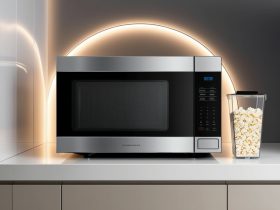
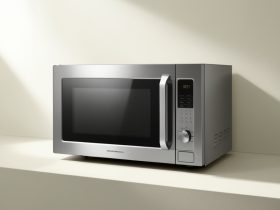
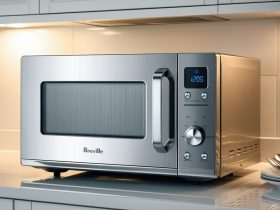
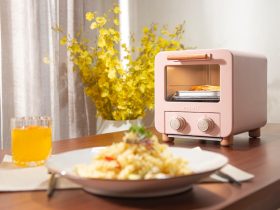
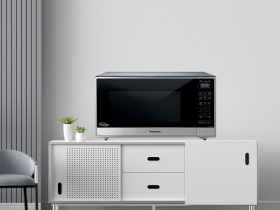
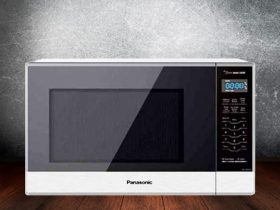
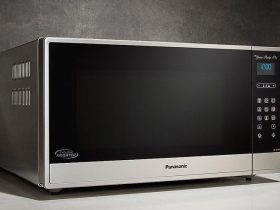
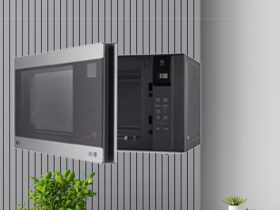
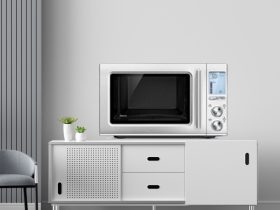
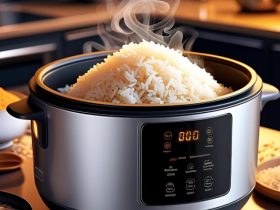


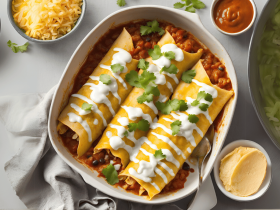


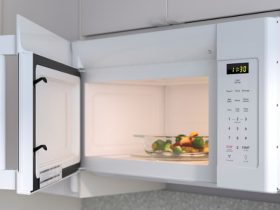

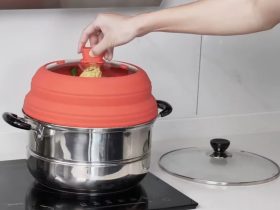
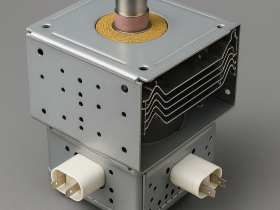
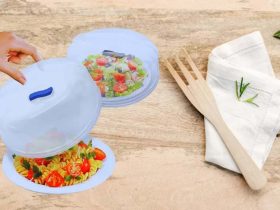
Leave a Reply